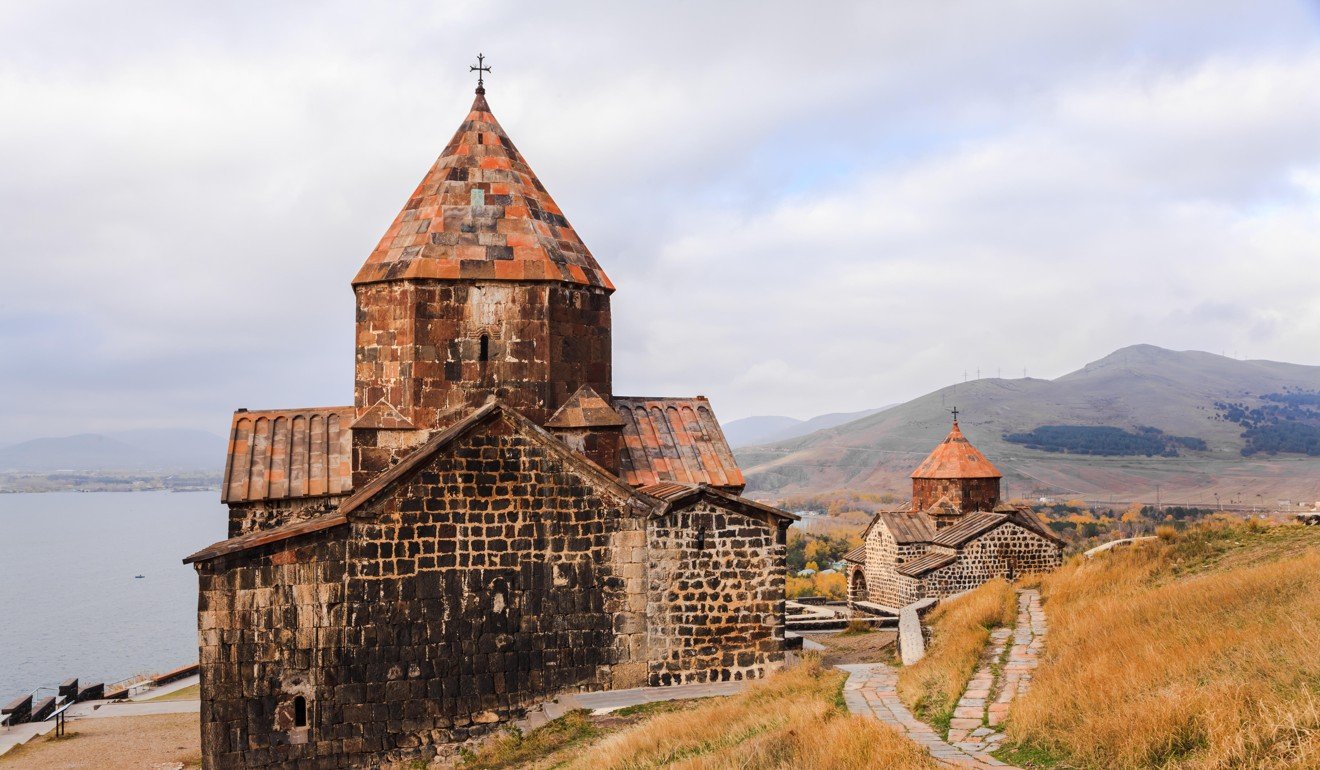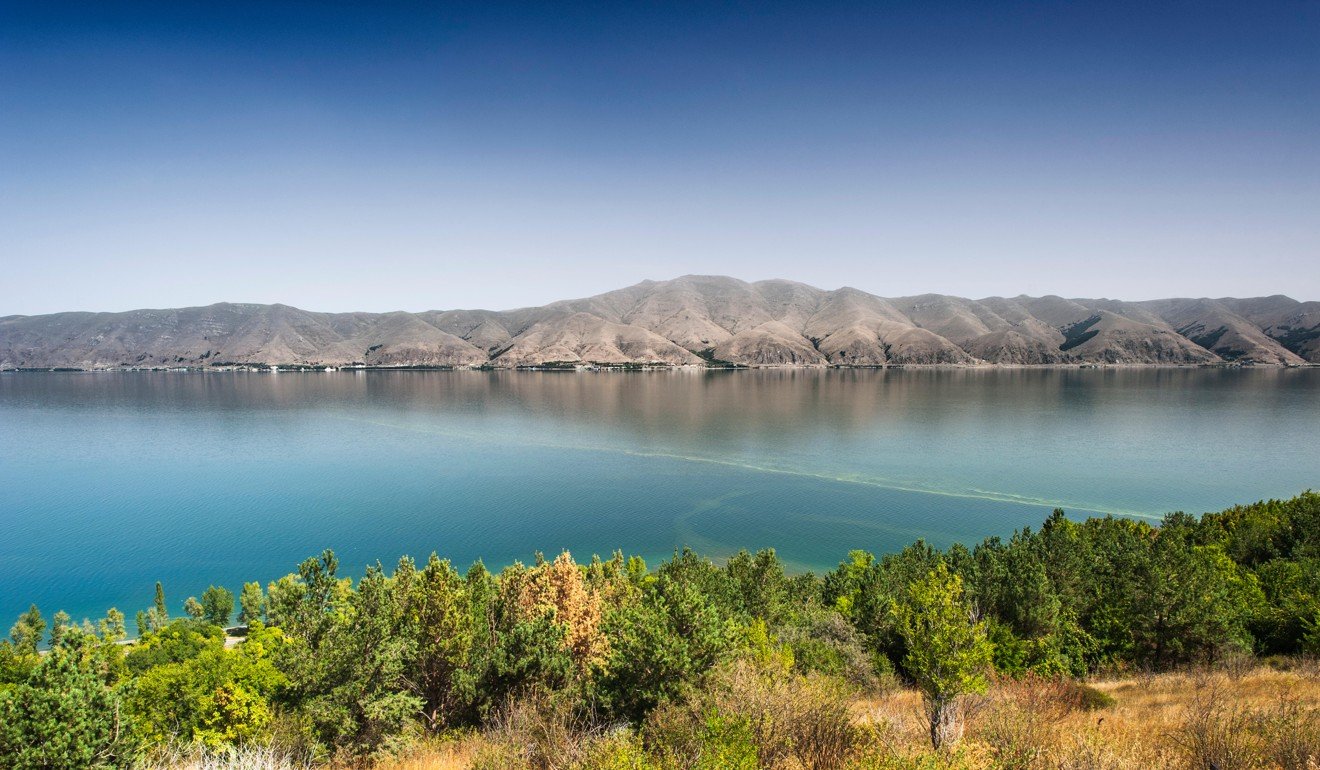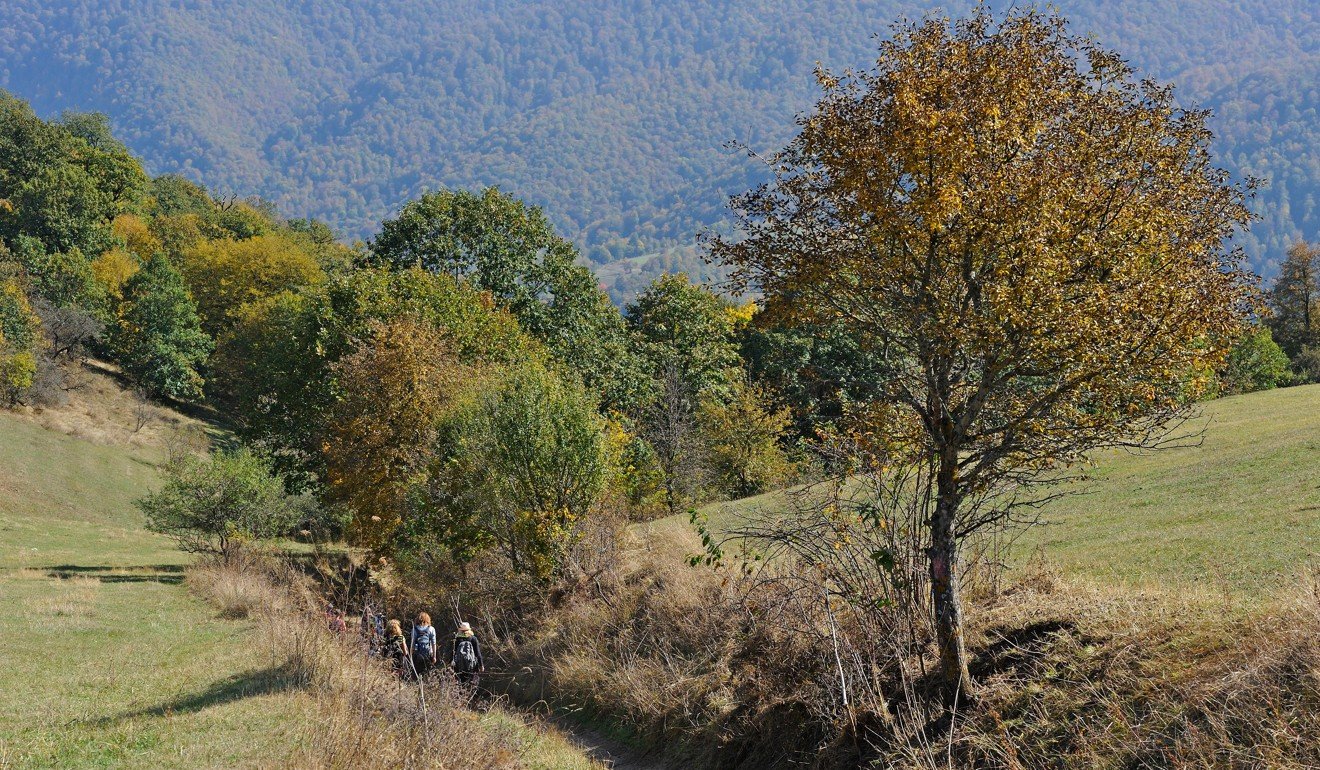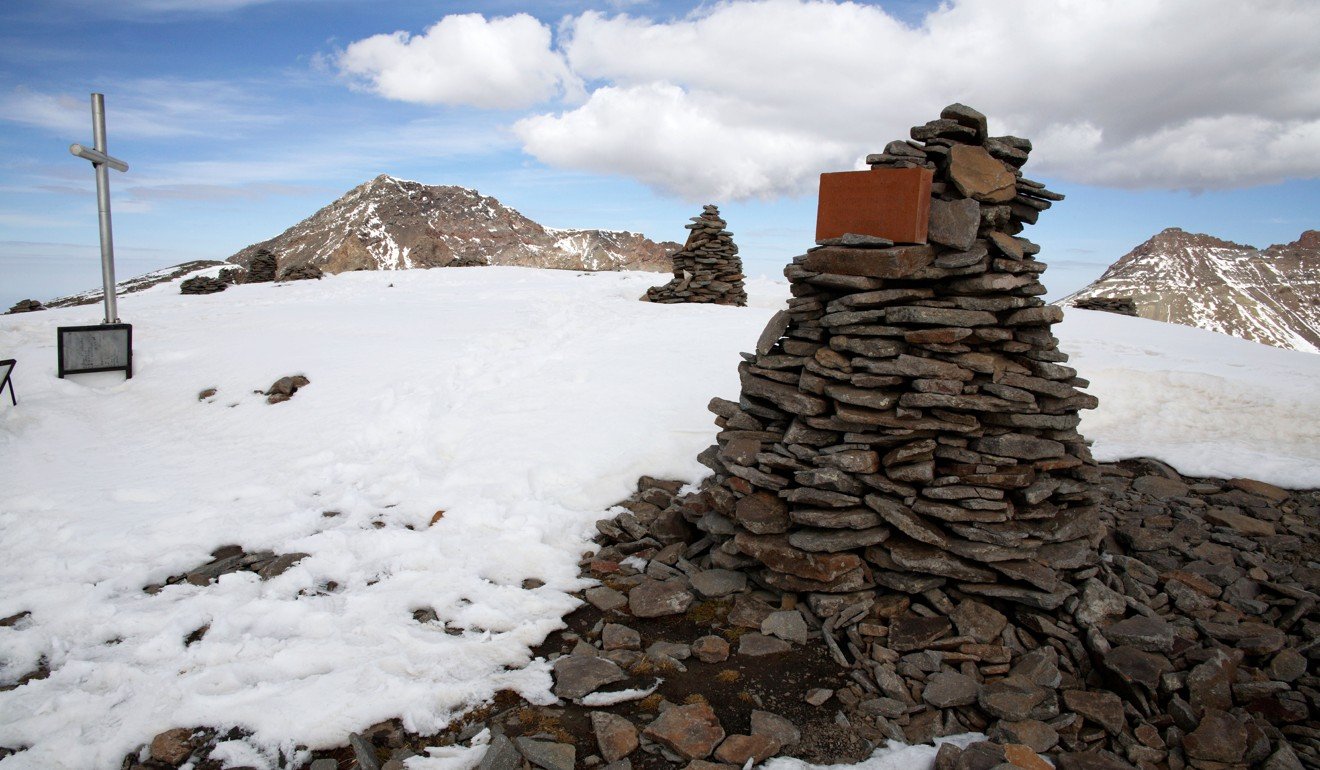
Hiking in Armenia: empty trails, snowy Caucasus peaks, historic sites, and surprises
- For those used to crowded trails, Armenia is a liberating experience
- The people are warm and the scenery stunning. But things can be unpredictable
My son, Marc, and I had tramped through shin-deep snow for several hours. By the time we reached the blustery top of the peak, we couldn’t see more than a few metres around us because of a whiteout.
Somewhere in front of us was a deep crater and the surrounding peaks of a volcanic rim we had hoped to reach. But as we stood on one of the highest peaks in Armenia’s Caucasus Mountains, we were satisfied we had made it this far.
For much of the last century, nobody would have considered the former Armenian Soviet Socialist Republic a hiking destination. But a few decades of independence and a strengthening democratic government have given the little nation a growing reputation as an interesting and safe place for hiking. We met hikers from France, England, Canada, Belgium and Australia in just a few days on the trails.
Smithsonian magazine earlier this year identified Armenia as one of the next world-class hiking destinations.

The nation’s beautifully wooded Dilijan National Park resembles America’s Great Smoky Mountains National Park. The plateaus of its volcanic Mount Aragats, 40 kilometres northwest from the capital Yerevan, look something like the high country in California’s Sierra Nevada, with barren igneous rock, gravelly slopes and snow-covered peaks.
Lake Sevan in eastern Armenia is twice as large as Lake Tahoe in the Sierra Nevada. Although its waters don’t have the clarity that makes Tahoe so spectacular, you won’t find a traffic jam around the lake’s perimeter or dense neighbourhoods of mansions.
What the country lacks in affluence is offset by the warmth of the people, whose identity is anchored to its long history. Yerevan was founded in 782BC, decades before Rome. Between hikes, you can visit ancient temples and some of the oldest Christian churches in the world.

You may find a few surprises and challenges in hiking or climbing in Armenia.
Often trail heads are not marked. The weather will be unpredictable. The flora will be foreign. You might end up driving your rental car across a boulder-strewn mountain river to get near a trail. If you find a topographic map, it will probably be written in Armenian – which doesn’t use the Latin alphabet.
It dawned on me just how surprising travelling around Armenia could get when Marc and I rented a car in early June in Yerevan, and the rental agent warned me that my California driving licence wasn’t strictly legal.
If I was stopped by police, he said, just offer money. How much, I asked? About US$10 would be more than enough. Now that is the kind of advice you don’t get at a US rental counter. Fortunately, it was not needed.

Just to get to Armenia requires a long flight. That is important in planning strenuous hiking, because if you are flying from North America it takes a while to get over that day-to-night jet lag.
But the country rewards those who make the effort. It will be a liberating experience from the crowded trails, packed car parks and scarce back-country permits in California. In fact, you won’t need any permits in Armenia.
I had long searched for a good reason to visit Armenia. When I was growing up in Detroit, my father often reminisced about growing up in the Caucasus Mountains in the early 20th century. Marc had just completed graduate school and had a one-week window to join me in Armenia. He spent a week surfing in Indonesia and flew west, and I flew east.
After a day of exploring Yerevan on foot, we planned for three or four days of hiking. On the way to Dilijan National Park, we stopped at the Sevanavank Monastery, two 1,100-year-old stone churches overlooking Sevan Lake.

We went on two hikes in Dilijan National Park. The first was to pleasant back-country Gosh Lake, along the Transcaucasian Trail, or TCT. At the lake, we met a Canadian hiker who seemed lost. He joined us, and we gave him a ride back to the town of Dilijan.
A hiking brochure … advised using guides for many of the much less ambitious hikes in Armenia. The only problem was finding a good one
A few days later, I met park superintendent Armen Abrahamyan at the park’s headquarters just outside Dilijan. The park now has 124 miles (200km) of trails, about half of them on the TCT, he said. Some of them are Jeep roads, although we didn’t encounter vehicle traffic on our hikes. The TCT will eventually extend from Georgia through Armenia, covering 1,864 miles and connecting existing and future national parks.
Our second hike took us to the ruins of the 11th-century Jukhtak Monastery, deep in a forest. I imagined how people, isolated from the rest of the world, would hike to that mountaintop 1,000 years ago. It seemed such a far cry from driving to a church car park these days.
The main objective of our trip was Mount Aragats, the highest peak in the country, about an hour’s drive east of Yerevan.
I found a crude digital topographic map of Aragats on the internet. I wasn’t sure there was an actual trail, and we didn’t have time to find our own route.

I quickly realised we would need a guide. A hiking brochure, produced under the sponsorship of the US Agency for International Development, advised using guides for many of the much less ambitious hikes in Armenia. The only problem was finding a good one.
I talked with Armenian travel agents, Armenian journalists and Armenian aid officials. I found hiking guides online and tried to email them. I talked with a couple of guys with the Armenian Hiking Society who I’d met on the Sam Merrill Trail above Altadena in California.

We met a group of Belgians camping nearby, led by Nver Avetisyan, a friendly mountain guide. He drove the only Dodge Caravan we saw on our trip (“I like American cars,” he said). He invited us into his dining tent for some tea and coffee. We brought a bag of ripe cherries we had bought earlier and talked about the future of democracy in Armenia.

Mount Aragats has four peaks, the highest being the north summit, at 13,420 feet (4,090 metres). It was still snow-covered in mid-June and would have required a 6,000-foot vertical climb in one day or an overnight stay in the crater. Either way, we would be traversing deep, soft snow.
The weather wasn’t cooperating. The Caucasus Mountains can be unpredictably stormy, with violent lightning. In the morning, the storm clouds roiled. So we cancelled climbing Aragats North and chose the much tamer Aragats South, at 12,756 feet. We weren’t disappointed.

Our hiking trip barely scratched the surface of what Armenia’s four national parks have to offer. I ran out of time before we could get to Arevik National Park along the southern border. Maybe someday I’ll try again for Aragats North, knowing I’ll need more time.
Even in the Sierra, you sometimes have to try more than once to reach a peak.
Getting there from Hong Kong
Aeroflot, Emirates and Qatar Airways offer connecting flights between Hong Kong and Yerevan.
Where to stay
Where to eat

